
Húsavík: The Whale Watching Capital of Iceland
Discover Húsavík, Iceland's whale-watching capital, where stunning natural beauty meets rich cultural heritage. Experience unforgettable marine adventures and serene landscapes.
Húsavík, a charming town located on the northern coast of Iceland, is often regarded as the whale-watching capital of the country. Nestled by the Skjálfandi Bay, this small fishing village offers breathtaking views of the surrounding mountains and the Arctic Ocean. The town's rich history and cultural heritage, combined with its stunning natural beauty, make it a must-visit destination for any traveler exploring Iceland. Húsavík is renowned for its whale-watching tours, which provide visitors with the chance to see majestic creatures like humpback whales, minke whales, and even blue whales in their natural habitat. These tours are conducted by expert guides who share fascinating insights into the marine life and ecology of the area. The Húsavík Whale Museum is another highlight, offering in-depth information about the different species of whales and the history of whaling in Iceland. Aside from whale watching, Húsavík boasts a variety of other attractions. The town's picturesque wooden church, Húsavíkurkirkja, built in 1907, is a beautiful example of Icelandic architecture. The geothermal baths at GeoSea provide a relaxing experience with panoramic views of the ocean and mountains. For those interested in history, the Exploration Museum celebrates the history of human exploration, from the Viking Age to space exploration. With its unique blend of natural wonders and cultural experiences, Húsavík is a destination that promises to enchant every visitor.
Local tips in Husavik
- Book whale-watching tours in advance, especially during the peak summer months, to ensure availability.
- Dress warmly and in layers, even in summer, as the weather can be unpredictable and chilly on the water.
- Visit the GeoSea geothermal baths for a relaxing soak with incredible ocean views.
- Explore the Húsavík Whale Museum to learn more about the marine life you might see on your tour.
- Take a stroll through the town to admire the traditional Icelandic architecture and enjoy the local cafes and restaurants.
Húsavík: The Whale Watching Capital of Iceland
Húsavík, a charming town located on the northern coast of Iceland, is often regarded as the whale-watching capital of the country. Nestled by the Skjálfandi Bay, this small fishing village offers breathtaking views of the surrounding mountains and the Arctic Ocean. The town's rich history and cultural heritage, combined with its stunning natural beauty, make it a must-visit destination for any traveler exploring Iceland. Húsavík is renowned for its whale-watching tours, which provide visitors with the chance to see majestic creatures like humpback whales, minke whales, and even blue whales in their natural habitat. These tours are conducted by expert guides who share fascinating insights into the marine life and ecology of the area. The Húsavík Whale Museum is another highlight, offering in-depth information about the different species of whales and the history of whaling in Iceland. Aside from whale watching, Húsavík boasts a variety of other attractions. The town's picturesque wooden church, Húsavíkurkirkja, built in 1907, is a beautiful example of Icelandic architecture. The geothermal baths at GeoSea provide a relaxing experience with panoramic views of the ocean and mountains. For those interested in history, the Exploration Museum celebrates the history of human exploration, from the Viking Age to space exploration. With its unique blend of natural wonders and cultural experiences, Húsavík is a destination that promises to enchant every visitor.
When is the best time to go to Husavik?
Iconic landmarks you can’t miss
North Sailing - Húsavík Whale Watching
Explore Húsavík's breathtaking whale watching tours with North Sailing, where eco-friendly adventures meet majestic marine life in stunning Icelandic waters.

Gentle Giants - Husavik Whale Watching
Discover the wonders of whale watching in Husavik with Gentle Giants, where adventure meets conservation on the stunning North Atlantic waters.

Geosea - Geothermal Sea Baths
Experience the ultimate relaxation at Geosea - Geothermal Sea Baths in Húsavík, where stunning views and natural hot springs meet.

Húsavík Whale Museum
Explore the Húsavík Whale Museum, a captivating destination dedicated to marine life, conservation, and the majestic whales of Iceland's waters.

Gamli Baukur
Experience the flavors of Iceland at Gamli Baukur, Húsavík's beloved restaurant known for its fresh seafood and warm hospitality.

Fosshotel Húsavík
Experience Icelandic hospitality at Fosshotel Húsavík, your gateway to unforgettable whale watching and scenic adventures in North Iceland.
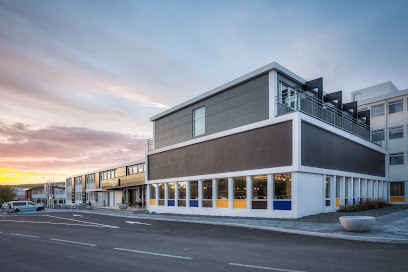
Húsavík Harbor
Explore Húsavík Harbor, the enchanting gateway to whale watching and Iceland's rich maritime culture, nestled along the stunning northern coast.

Jaja Ding Dong Húsavík
Discover Jaja Ding Dong Húsavík - a lively bar and bistro celebrating Eurovision spirit with local flavors and unforgettable experiences.

Husavik Adventures
Discover the thrilling beauty of whale watching and Icelandic nature with Husavik Adventures, your top choice for unforgettable marine excursions.
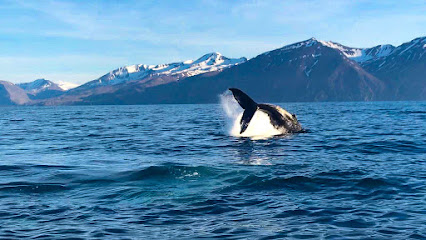
Húsavík Cape Hotel
Discover the charm of Húsavík Cape Hotel, your perfect base for exploring Iceland's enchanting landscapes and unforgettable whale watching adventures.

Árból Guesthouse
Discover the charm and comfort of Árból Guesthouse in Húsavík, your gateway to Iceland's stunning landscapes and unforgettable adventures.

Húsavík Wooden Church
Explore the stunning Húsavík Wooden Church, a charming Lutheran church nestled in Iceland's scenic landscapes and rich cultural heritage.

Húsavík öl
Experience the best of Icelandic craft beer at Húsavík öls, where every brew is crafted with passion and local flavors.

Húsavík Green Hostel
Discover the eco-friendly Húsavík Green Hostel, the perfect base for exploring Iceland's stunning landscapes and unforgettable whale watching adventures.

Friends of Moby Dick - Whale Watching
Explore the majestic beauty of Icelandic waters with Friends of Moby Dick, the ultimate whale watching experience in Húsavík.

Unmissable attractions to see
Goðafoss
Discover the breathtaking beauty and historical significance of Goðafoss, Iceland's stunning 'Waterfall of the Gods,' a must-visit natural attraction.

North Sailing - Húsavík Whale Watching
Experience the thrill of whale watching in Húsavík with North Sailing, the premier tour agency for unforgettable marine adventures.

Gentle Giants - Husavik Whale Watching
Embark on an unforgettable whale watching journey with Gentle Giants in Húsavík, the whale watching capital of Europe, and witness majestic marine life up close.

Geosea - Geothermal Sea Baths
Experience the ultimate relaxation at Geosea - Geothermal Sea Baths in Húsavík, where stunning ocean views meet the healing power of nature.
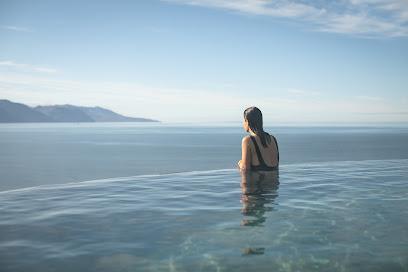
Húsavík Whale Museum
Discover the captivating world of marine life at Húsavík Whale Museum, a must-visit for whale lovers and eco-conscious travelers in Iceland.

Krafla
Explore Krafla, Iceland's stunning volcano featuring a breathtaking crater lake and vibrant geothermal activity amidst dramatic landscapes.
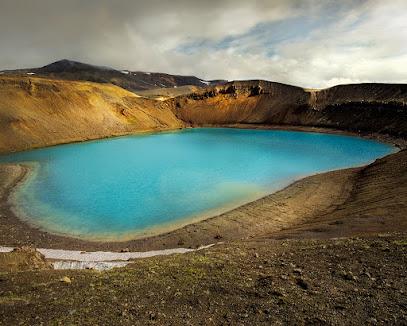
nand nand n Laufás Museum and heritage siteS
Discover the beauty and history of Laufás Museum, a heritage site in Grýtubakkahreppur, showcasing Iceland's rich cultural past.

Ásbyrgi
Discover the stunning Ásbyrgi Canyon, a natural marvel in Iceland featuring breathtaking views, rich wildlife, and enchanting folklore.

Jaja Ding Dong Húsavík
Discover Jaja Ding Dong, a vibrant bar and bistro in Húsavík celebrating Icelandic culture and the Eurovision spirit with delicious food and lively events.
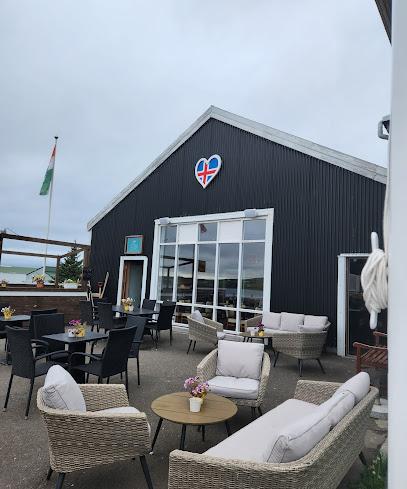
Gljúfrastofa - Ásbyrgi Visitor Centre
Explore Ásbyrgi, a breathtaking canyon in Jökulsárgljúfur National Park, rich in natural beauty, history, and wildlife - a must-visit destination in Iceland.

Husavik Adventures
Experience the thrill of whale watching in Húsavík with Husavik Adventures, the renowned tour operator in Iceland's whale capital.

Hljóðaklettar
Experience the breathtaking beauty of Hljóðaklettar National Park, a natural wonder filled with unique rock formations and serene hiking trails in Iceland.

Eyjafjörður
Discover the breathtaking landscapes and vibrant wildlife of Eyjafjörður, a stunning fjord in northern Iceland, perfect for adventure and relaxation.
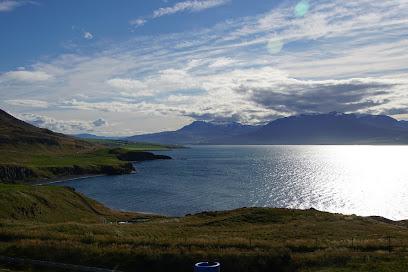
Húsavík Wooden Church
Explore the architectural beauty and serene ambiance of Húsavík Wooden Church, a must-visit tourist attraction in Iceland's charming coastal town.

Hafragilsfoss / Jökulsárgljúfur View Point
Explore the breathtaking Hafragilsfoss View Point in Jökulsárgljúfur National Park, a stunning waterfall and natural paradise in Iceland.

Essential places to dine
Gentle Giants - Husavik Whale Watching
Embark on an unforgettable whale watching adventure in Húsavík with Gentle Giants - where majestic marine life meets breathtaking landscapes.
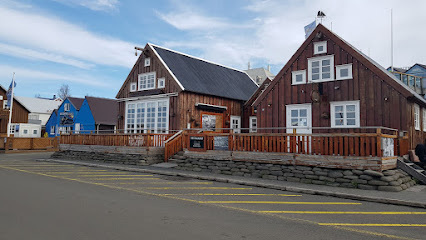
Húsavík Whale Museum
Explore Iceland's marine wonders at Húsavík Whale Museum—an educational journey into the world of whales and conservation.
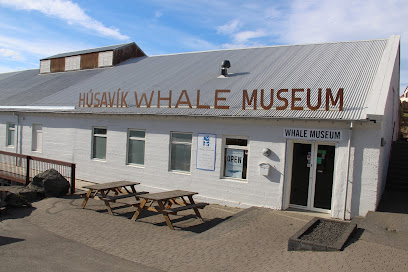
Naustið
Experience authentic Icelandic cuisine at Naustið, where fresh seafood meets breathtaking views in charming Húsavík.

Gamli Baukur
Experience authentic Icelandic cuisine at Gamli Baukur in Húsavík – where tradition meets breathtaking views.

Salka Restaurant
Experience authentic Icelandic cuisine at Salka Restaurant in Húsavík—where every dish tells a story.

Fosshotel Húsavík
Experience exceptional dining and cozy accommodations at Fosshotel Húsavík amidst breathtaking Icelandic scenery.

Fish and Chips
Savor freshly caught fish and chips in Húsavík's cozy eatery while soaking up Icelandic charm and maritime heritage.

Nettó
Explore Húsavík's local flavors and essentials at Nettó Supermarket - your convenient shopping destination!

Jaja Ding Dong Húsavík
Discover the vibrant spirit of Jaja Ding Dong Húsavík - where delicious cuisine meets Icelandic musical heritage in an unforgettable atmosphere.

Heimabakarí
Discover cozy comfort at Heimabakarí in Húsavík - where homemade treats and local charm await every visitor.
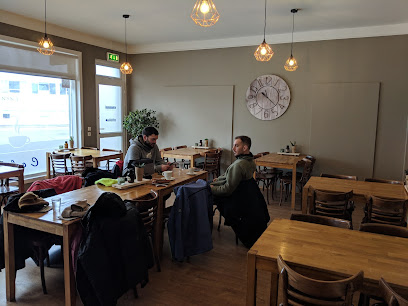
Husavik Campground
Experience nature at its finest at Húsavík Campground - your base for adventure in Iceland's whale watching capital.

Húsavík Cape Hotel
Discover unparalleled comfort at Húsavík Cape Hotel, your gateway to unforgettable Icelandic adventures including world-class whale watching.

á Gregor's restaurant North Iceland
Experience authentic Icelandic cuisine at á Gregor's Restaurant in Dalvík – where fresh local ingredients meet breathtaking views.

Lókal Bistro
Discover the cozy charm of Lókal Bistro in Húsavík – where local flavors meet a welcoming atmosphere.

Hlodufell Restaurant & Bar Husavik
Discover an exceptional dining experience at Hlodufell Restaurant & Bar in Husavik, featuring fresh seafood and Asian-inspired cuisine amidst stunning views.

Markets, malls and hidden boutiques
North Sailing - Húsavík Whale Watching
Join North Sailing for an unforgettable whale watching experience in Húsavík, where marine wonders await in the breathtaking Icelandic waters.
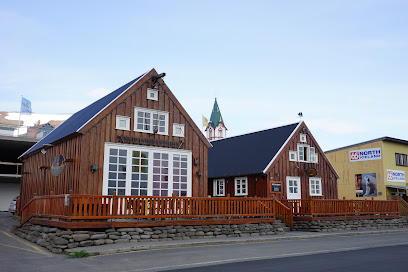
Gentle Giants - Husavik Whale Watching
Discover the beauty of Húsavík with Gentle Giants, the premier whale watching tour agency in Iceland, offering unforgettable marine adventures.
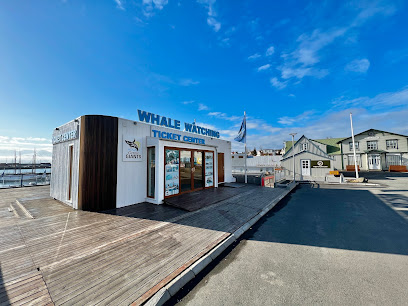
Húsavík Whale Museum
Explore the Húsavík Whale Museum, home to fascinating whale skeletons and engaging exhibits that reveal the wonders of marine life.

Naustið
Experience the best of Icelandic seafood at Naustið in Húsavík, where fresh flavors meet stunning harbor views.
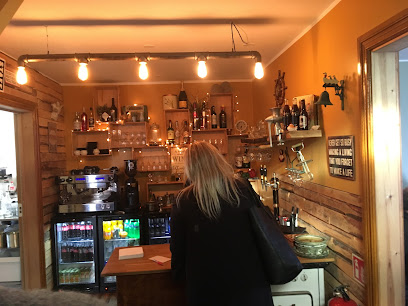
Fish and Chips
Savor the ultimate fish and chips in Húsavík, where fresh seafood meets stunning coastal views for an unforgettable dining experience.

Húsavík Harbor
Discover the breathtaking beauty and vibrant culture of Húsavík Harbor, Iceland's premier whale-watching destination and charming coastal town.

Nettó
Discover a wide range of grocery essentials at Nettó in Húsavík, where local flavors meet convenience for every traveler.

Heimabakarí
Discover the heart of Húsavík at Heimabakarí, where delicious pastries and warm hospitality await in this cozy Icelandic café.
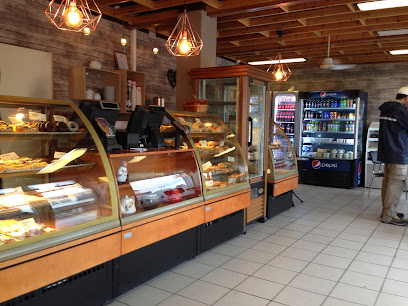
Husavik Adventures
Experience unforgettable whale watching and stunning marine adventures with Husavik Adventures in the picturesque town of Húsavík, Iceland.

Húsavík Wooden Church
Explore the enchanting Húsavík Wooden Church, a charming Lutheran church rich in history, offering stunning architecture and serene coastal views.

Hérna
Discover the cozy charm of Hérna, Húsavík's beloved cafe, where exceptional coffee and fresh pastries await every visitor.

Húsavík öl
Experience the vibrant craft beer scene at Húsavík Öl, a charming brewpub in Iceland's scenic town of Húsavík, perfect for relaxation and good company.

Friends of Moby Dick - Whale Watching
Embark on an unforgettable whale watching adventure in Húsavík with Friends of Moby Dick, where marine magic awaits in the North Atlantic.

Vínbúðin
Discover the finest selection of local and imported beverages at Vínbúðin, Húsavík's premier state liquor store, where quality meets Icelandic tradition.

Húsavík Green Hostel
Experience a cozy and eco-friendly stay at Húsavík Green Hostel, your gateway to the wonders of Iceland's northern coast.

Essential bars & hidden hideouts
Naustið
Experience the best of Icelandic seafood at Naustið in Húsavík, where fresh ingredients meet stunning views.

Gamli Baukur
Experience the flavors of Iceland at Gamli Baukur, Húsavík's charming culinary haven with stunning harbor views and authentic dishes.

Salka Restaurant
Experience the essence of Icelandic cuisine at Salka Restaurant in Húsavík, where every bite tells a story.

Fosshotel Húsavík
Discover the charm of Fosshotel Húsavík, your ideal base for whale watching and exploring Iceland's stunning natural beauty.

Fish and Chips
Discover authentic Icelandic cuisine with a focus on fresh fish and crispy chips in the charming town of Húsavík.

Jaja Ding Dong Húsavík
Experience the vibrant culture and Eurovision legacy at Jaja Ding Dong Húsavík, a bar and bistro blending fun and local flavor in Iceland.

Heimabakarí
Discover the cozy charm of Heimabakarí, where freshly baked goods and delightful coffee await in beautiful Húsavík, Iceland.
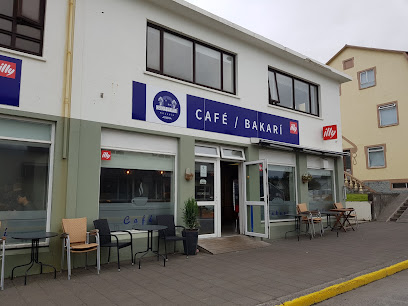
Hlodufell Restaurant & Bar Husavik
Experience the fusion of flavors at Hlodufell Restaurant & Bar, where sushi meets Icelandic hospitality in the heart of Husavik.

Lókal Bistro
Discover the flavors of Iceland at Lókal Bistro, a charming café in Húsavík offering fresh, locally-sourced dishes in a cozy setting.

Hérna
Discover the cozy charm of Hérna, a delightful cafe in Húsavík serving fresh local treats and warm hospitality amidst stunning Icelandic landscapes.

Húsavík öl
Explore the flavors of Iceland at Húsavík Öl, the premier brewpub in Húsavík, offering a unique selection of local craft beers and a vibrant atmosphere.
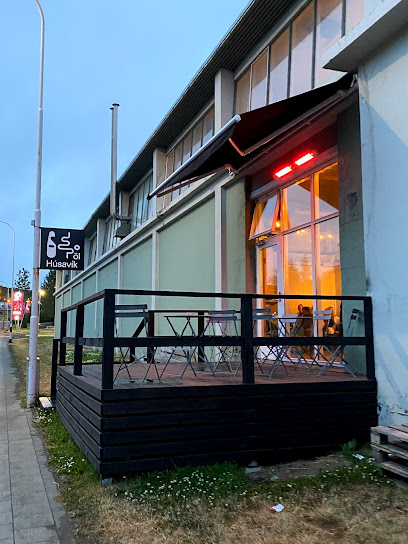
Grill 66
Savor the authentic taste of Iceland at Grill 66 in Húsavík, where delicious sandwiches meet local charm in a cozy atmosphere.

Pizzakofinn
Experience the best of Icelandic flavors at Pizzakofinn, Húsavík's beloved pizza destination, where every bite tells a story.

Nesti
Experience the essence of Icelandic cuisine at Nesti in Húsavík, where local flavors and warm hospitality come together.

Olís
Experience the best of Húsavík at Olís – a restaurant, coffee shop, and convenience store all in one, perfect for every traveler’s needs.

Travel experiences inspired by this city
Explore more travel diariesLocal Phrases
-
- HelloHalló
[HAH-loh] - GoodbyeBless
[BLETSS] - YesJá
[yah] - NoNei
[nay] - Please/You're welcomeGjörðu svo vel
[GYOR-thoo s-voh vel] - Thank youTakk fyrir
[tahk FEER-ir] - Excuse me/SorryFyrirgefðu
[FEER-ir-gef-thu] - How are you?Hvað segir þú?
[kvath SEY-ir thoo] - Fine. And you?Í lagi. En þú?
[EE-lah-gee. en thoo] - Do you speak English?Talar þú ensku?
[TAH-lahr thoo ENS-koo] - I don't understandÉg skil ekki
[yeh skil EHK-kee]
- HelloHalló
-
- I'd like to see the menu, pleaseÉg væri til í að sjá matseðilinn, takk
[yeh VYEH-ree teel ee ahd shah MAHT-se-thil-inn, tahk] - I don't eat meatÉg borða ekki kjöt
[yeh BORTH-a EHK-kee chyoot] - Cheers!Skál!
[skowl] - I would like to pay, pleaseÉg væri til í að greiða, takk
[yeh VYEH-ree teel ee ahd gray-tha, tahk]
- I'd like to see the menu, pleaseÉg væri til í að sjá matseðilinn, takk
-
- Help!Hjálp!
[HYOWL-p] - Go away!Farðu í burtu!
[FARTH-oo ee BUHR-too] - Call the Police!Hringðu í lögregluna!
[HRING-thu ee LUR-eg-loo-nah] - Call a doctor!Hringðu í lækninn!
[HRING-thu ee lighk-nin] - I'm lostÉg er villtur
[yeh ehr VIL-thur] - I'm illÉg er veikur
[yeh ehr VAY-kur]
- Help!Hjálp!
-
- I'd like to buy...Ég væri til í að kaupa...
[yeh VYEH-ree teel ee ahd KOW-pa] - I'm just lookingÉg er bara að skoða
[yeh ehr BAH-ra ahd SKOTH-a] - How much is it?Hvað kostar þetta?
[kvath KOS-tar THEH-ta] - That's too expensiveÞað er of dýrt
[thath ehr ov DEERT] - Can you lower the price?Geturðu lækkarðu verðið?
[GAY-thur-thu LAY-kar-thu VER-thith]
- I'd like to buy...Ég væri til í að kaupa...
-
- What time is it?Hvað er klukkan?
[kvath ehr kluk-an] - It's one o'clockKlukkan er eitt
[kluk-an ehr ayt] - Half past (10)Hálf tíu
[howlf tee-oo] - MorningMorgunn
[MOR-gun] - AfternoonSíðdegis
[SEETH-de-gis] - EveningKvöld
[kvulth] - YesterdayÍ gær
[EE gair] - TodayÍ dag
[EE dahg] - TomorrowÁ morgun
[ow MOR-gun] - 1Eitt
[ayt] - 2Tvö
[tvuh] - 3Þrjú
[thryoo] - 4Fjögur
[fyuh-gur] - 5Fimm
[fim] - 6Sex
[sehx] - 7Sjö
[syuh] - 8Átta
[ow-tha] - 9Níu
[nee-oo] - 10Tíu
[tee-oo]
- What time is it?Hvað er klukkan?
-
- Where's a/the...?Hvar er einhver...
[kvar ehr ain-kvair] - What's the address?Hvað er heimilisfangið?
[kvath ehr hay-mil-is-fang-ith] - Can you show me (on the map)?Geturðu sýnt mér (á kortinu)?
[GAY-thur-thu seent mair (ow KOR-tin-oo)] - When's the next (bus)?Hvenær kemur næsta (strætisvagn)?
[kveh-nair keh-moor nysta (strait-is-vagn)] - A ticket (to ....)Einn miða (til ...)
[aytn meetha (til)]
- Where's a/the...?Hvar er einhver...
History of Husavik
-
Husavik is often considered the first place in Iceland where a Norseman permanently settled. According to the Landnámabók (The Book of Settlements), a Swedish Viking named Garðar Svavarsson arrived in Iceland around 870 AD. After circumnavigating the island, Garðar decided to spend the winter in what is now Husavik. He built a house there, giving the place its name, which means 'Bay of Houses'. This early settlement marked the beginning of human habitation in the area.
-
Throughout the centuries, Husavik evolved into a vital fishing hub. The town's location on Skjálfandi Bay made it an ideal spot for fishing and trade. By the late 19th and early 20th centuries, the fishing industry had become the backbone of Husavik's economy. The establishment of fish processing plants and the introduction of modern fishing techniques brought prosperity to the town and attracted a growing population.
-
In the early 1990s, Husavik began to gain prominence as a prime location for whale watching. The rich waters of Skjálfandi Bay are home to a variety of whale species, including humpback, minke, and blue whales. Local entrepreneurs recognized the potential for eco-tourism and started offering whale watching tours. This transformed Husavik into the 'Whale Watching Capital of Iceland', drawing visitors from around the globe and diversifying the local economy.
-
Opened in 1997, the Húsavík Whale Museum is a testament to the town's deep connection with marine life. The museum offers extensive exhibits on various whale species, the history of whaling, and the importance of marine conservation. It has become a significant educational and cultural institution in Husavik, further cementing the town's reputation as a center for whale watching and marine research.
-
Husavik has also made strides in harnessing geothermal energy, a natural resource abundantly available in Iceland. The town's geothermal plant provides sustainable energy for heating homes and businesses. Husavik's innovative use of geothermal resources exemplifies Iceland's broader commitment to renewable energy and environmental sustainability, showcasing the town as a model for ecological innovation.
-
Husavik is home to several cultural landmarks, including the iconic Húsavíkurkirkja, a wooden church built in 1907. The town also hosts various cultural events and festivals throughout the year, such as the Húsavík Music Festival and the Mærudagar Festival, which celebrate local music, arts, and traditions. These events provide a glimpse into the vibrant community life and rich cultural heritage of Husavik.
Husavik Essentials
-
Husavik is located in northern Iceland, approximately 480 kilometers from Reykjavik. The nearest airport is Húsavík Airport (HZK), which primarily serves domestic flights. Alternatively, you can fly into Akureyri Airport (AEY), about 90 kilometers away, and then take a bus or rent a car to Husavik. From Reykjavik, you can also drive via Route 1 (the Ring Road) to reach Husavik, a journey that typically takes around 5 to 6 hours.
-
Husavik is a small town, and many of its attractions are within walking distance. For longer trips, local taxis and car rentals are available. Public buses connect Husavik to nearby towns and villages, but they may not run frequently. Renting a car is highly recommended for exploring the surrounding areas, including the Diamond Circle route, at your own pace.
-
The official currency in Iceland is the Icelandic Króna (ISK). Credit and debit cards are widely accepted in Husavik, including in hotels, restaurants, and shops. ATMs are available in the town for withdrawing cash. It is advisable to carry some cash for smaller establishments and remote areas where card payments might not be possible.
-
Husavik is generally a very safe destination for tourists. Crime rates are low, and there are no specific areas with high crime rates targeting tourists. However, it is always advisable to take standard precautions such as keeping an eye on your belongings, especially in crowded places, and avoiding walking alone at night in unfamiliar areas.
-
In case of an emergency, dial 112 for immediate assistance. Husavik has a medical clinic and pharmacy for minor health issues. For more serious medical emergencies, you may need to travel to Akureyri, where there is a regional hospital. It is advisable to have travel insurance that covers medical emergencies and evacuation if needed.
-
Fashion: Do dress in layers and be prepared for changing weather conditions. Waterproof and windproof clothing is essential. Avoid wearing overly flashy or revealing clothing, as it may be considered inappropriate. Religion: Do respect local customs and traditions, especially when visiting churches. Public Transport: Do be courteous and give up your seat to elderly or disabled passengers. Don't eat or drink on public transport unless it's allowed. Greetings: Do greet people with a friendly 'Góðan daginn' (Good day). A firm handshake is common. Eating & Drinking: Do try local delicacies such as fresh seafood and traditional Icelandic dishes. Don't refuse hospitality, as it is considered impolite. Be prepared for the high cost of dining out.
-
To experience Husavik like a local, visit the Whale Museum and take a whale watching tour, as Husavik is known as the whale watching capital of Iceland. Engage with locals, who are often friendly and willing to share stories about their town. Don't miss the opportunity to relax in the GeoSea Geothermal Sea Baths, which offer stunning views of the ocean. For a unique dining experience, try the local restaurants that serve fresh fish and other Icelandic specialties.
Trending Landmark in Husavik
-
North Sailing - Húsavík Whale Watching
-
Gentle Giants - Husavik Whale Watching
-
Geosea - Geothermal Sea Baths
-
Húsavík Whale Museum
-
Gamli Baukur
-
Fosshotel Húsavík
-
Húsavík Harbor
-
Jaja Ding Dong Húsavík
-
Husavik Adventures
-
Húsavík Cape Hotel
-
Árból Guesthouse
-
Húsavík Wooden Church
-
Húsavík öl
-
Húsavík Green Hostel
-
Friends of Moby Dick - Whale Watching
Nearby Cities to Husavik
-
Things To Do in Akureyri
-
Things To Do in Dalvik
-
Things To Do in Saudarkrokur
-
Things To Do in Blonduos
-
Things To Do in Egilsstadir
-
Things To Do in Seydisfjordur
-
Things To Do in Isafjordur
-
Things To Do in Borgarnes
-
Things To Do in Stykkisholmur
-
Things To Do in Hveragerdi
-
Things To Do in Selfoss
-
Things To Do in Reykjavik
-
Things To Do in Vik
-
Things To Do in Kopavogur
-
Things To Do in Hafnarfjordur













